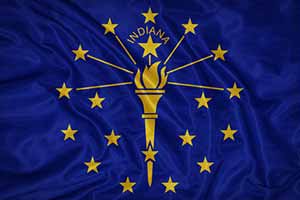Welcome home, Hoosier heroes! Whether you’re an active-duty service member, reservist, veteran, or military family member, Indiana is proud to call you one of its own. This page is your bridge to navigating the state’s diverse military installations, resources, and support networks.
From Camp Atterbury to the U.S. Naval Surface Warfare Center Crane Division, Indiana offers a range of active-duty bases, reserve facilities, and training sites. Scroll down to explore our comprehensive list and find the information you need, from base locations and contact details to community resources and veteran services.
Indiana Military Bases
Active Duty Indiana Military Bases
- Camp Atterbury-Muscatatuck: Located near Edinburgh, Camp Atterbury-Muscatatuck is a sprawling training facility serving as the largest Army Reserve facility in the nation. It hosts diverse training exercises and deployments for various military branches.
- Crane Naval Surface Warfare Center Division: Situated in Crane, this naval facility focuses on research, development, testing, and evaluation of weapons systems and technologies for the Navy and Marine Corps.
Indiana Reserve Military Bases
- Fort Wayne Air National Guard Base: Based in Fort Wayne, this Air National Guard base houses the 122nd Fighter Wing, known for its A-10 Thunderbolt II operations.
- Indianapolis Air National Guard Base: Located in Indianapolis, this base is home to the 181st Intelligence Wing, providing critical intelligence support to the Air Force.
Indiana Military Training Sites
- Muscatatuck Urban Training Center: Part of Camp Atterbury-Muscatatuck, this urban training center replicates urban environments for realistic combat training experiences.
- Jefferson Proving Ground: This proving ground near Madison serves as a testing and experimentation site for Army equipment and munitions.
Indiana State Flag History

At the time of Indiana’s statehood, the national flag bore 15 stars and stripes. This flag soon transformed in 1818 to feature 20 stars, reflecting the addition of Indiana and four other states to the nation’s constellation. Since then, Indiana has witnessed the national flag’s metamorphosis to its current array of 50 stars.
Indiana’s own state flag, adopted in 1917, presents a field of dark blue cradling a golden torch—the emblem of liberty and enlightenment. The torch’s glowing rays extend outward, symbolizing the widespread influence of these virtues. The flag is encircled by 19 golden stars, denoting Indiana’s place as the 19th state to join the Union. “Indiana” is inscribed above the torch, gilded as the flames, and is flanked by 13 outer stars representing the original states, with five inner stars for the subsequent states, and one larger star hovering above the torch, signifying Indiana itself. This flag not only represents Indiana’s heritage but also its enduring commitment to the ideals of freedom and knowledge.
Additional Indiana Veteran Resources
- Indiana Department of Veterans Affairs: https://www.in.gov/dva/
- Hoosier Veterans Assistance Program: https://www.hvafofindiana.org/
- National Veterans Outreach Program: https://texvet.org/resources/american-gi-forum-national-veterans-outreach-program





1 Comment
Leave your reply.